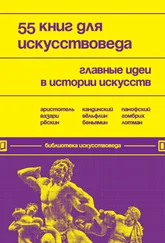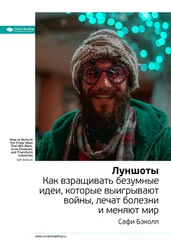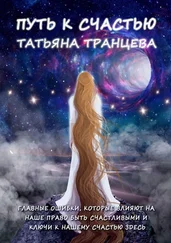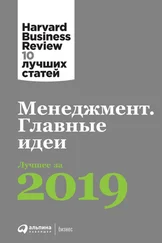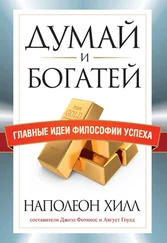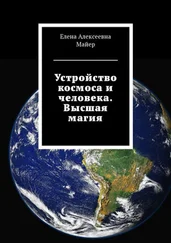13. S. Perlmutter, G. Aldering, M. Della Valle, S. Deustua, R. S. Ellis, S. Fabbro, A. Fruchter, et al., «Discovery of a Supernova Explosion at Half the Age of the Universe», Nature 391 (1998): 51.
14. A. G. Riess, A. V. Filippenko, P. Challis, A. Clocchiatti, A. Diercks, P. M. Garnavich, R. L. Gilliland, et al., «Observational Evidence from Supernovae for an Accelerating Universe and a Cosmological Constant», Astronomical Journal 116, no. 3 (1998): 1009–38.
15. Panek, 4 % Universe, 158–59.
16. James Glanz, «Exploding Stars Point to a Universal Repulsive Force», Science 279, no. 5351 (January 30, 1998): 651–52, available at www.sciencemag.org/content/279/5351/ 651.summary?sid=c2d42164-3577-4952-9687-77cf531d4729
17. Panek, 4 % Universe, 163; Marcia Bartusiak, Archives of the Universe: 100 Discoveries That Transformed Our Understanding of the Cosmos (New York: Vintage, 2004), 608–11.
18. Peter L. Galison, «Introduction: The Many Faces of Big Science», in Big Science: The Growth of Large-Scale Research, ed. Galison and Bruce Hevly (Stanford: Stanford University Press, 1992), 1; and W. K. H. Panofsky, «SLAC and Big Science: Stanford University», in ibid., 145.
6. Следующий рубеж
1. Отчет Джона Мазера о запуске спутника СОВЕ приводится в книге Mather and John Boslough, The Very First Light: The True Inside Story of the Scientific Journey Back to the Dawn of the Universe (New York: Basic Books, 2008), 3–9; название «Satellite in Love» связано с популярной песней певца Лу Рида из его альбома Transformer (1972)
2. Laurence Bergreen, Over the Edge of the World: Magellan’s Terrifying Circumnavigation of the Globe (New York: Harper Collins, 2004); and Mather and Boslough, Very First Light, 255–63.
3. Derek J. de Solla Price, Little Science, Big Science (New York: Columbia University Press, 1963), 239; and Helge Kragh, Cosmology and Controversy: The Historical Development of Two Theories of the Universe (Princeton: Princeton University Press, 1996), 123–34.
4. G. Lemaitre, «L’expansion de l’espace», Revue des questions scientifiques 20 (November 1931): 391–410, translated by Betty H. Korff and Serge A. Korff in The Primeval Atom: An Essay on Cosmogony (New York: Van Nostrand, 1950), quote on 78–79; and Lemaitre, «The Beginning of the World from the Point of View of Quantum Theory», Nature 127, no. 3210 (1931): 706. See also Kragh, Cosmology and Controversy, 22–60.
5. Kragh, Cosmology and Controversy, 81–101; Mather and Boslough, Very First Light, 28.
6. О первых результатах Ральфа А. Альфера и Роберта Германа можно прочитать в статье «Evolution of the Universe», Nature 162, no. 4124 (1948): 774–75, а также в книге Mather and Boslough, Very First Light, 42–43.
7. P. J. E. Peebles, «Discovery of the Hot Big Bang: What Happened in 1948», European Physical Journal H 39, no. 2 (2014): 205–23; Mather and Boslough, Very First Light, где в главах 1–6 живо описываются детали истории открытия реликтового излучения, включая анализ причин, по которым вклад Альфера, Германа и Гамова оказался недостаточно оцененным (я согласна с его выводами).
8. Mather and Boslough, Very First Light, 44; and R. H. Dicke, R. Beringer, R. L. Kyle, and A. B. Vane, «Atmospheric Absorption Measurements with a Microwave Radiometer», Physical Review 70 (1946): 340–48.
9. Kragh, Cosmology and Controversy, 133–34.
10. George Gamow, The Creation of the Universe (New York: Dover Science Books, 1952; reissue, 2004), chapters 2–4.
11. Alan Lightman, The Discoveries: Great Breakthroughs in 20th-Century Science, Including the Original Papers (New York: Pantheon, 2005), 411.
12. R. H. Dicke, P. J. E. Peebles, P. G. Roll, and D. T. Wilkinson, «Cosmic Black-Body Radiation», Astrophysical Journal 142 (1965): 416.
13. Marcia Bartusiak, Archives of the Universe: 100 Discoveries That Transformed Our Understanding of the Cosmos (New York: Vintage, 2004), 508.
14. Интервью, данное Ральфом Альфером и Робертом Германом Мартину Харвиту 12 августа 1983 года, Niels Bohr Library and Archives, American Institute of Physics, College Park, MD, 78. www.aip.org/history-programs/niels-bohr-library/oral-histories/3014–2; см. также Mather and Boslough, Very First Light, 39–49, 61–62.
15. Цитирую по данным National Medal of Science citation for Ralph A. Alpher, National Science Foundation, accessed August 25, 2014, www.nsf.gov/od/nms/recip_details.jsp?recip_id=5300000000427
16. Детали можно найти в работе R. H. Dicke, «The Measurement of Thermal Radiation at Microwave Frequencies», Review of Scientific Instruments 17, no.7 (1946): 268–75.
17. John Noble Wilford, «Scientists Report Profound Insight on How Time Began», New York Times, April 24, 1992; see also R. C. Smith, «Essay Review: The Significance of COBE», Contemporary Physics 35, no. 3 (1994): 213–15.
18. Peter Galison, Image and Logic: A Material Culture of Microphysics (Chicago: University of Chicago Press, 1997), 46, 830.
19. Дальнейшее описание «Саги программы BICEP» можно найти в книге Priyamvada Natarajan and Ravi Sankrit, «Ringside Seat at the Cutting Edge of Science», YaleGlobal Online, June 12, 2014, http://yaleglobal.yale.edu/content/ ringside-seat-cutting-edge-science
7. Новая реальность и поиски иных миров
1. Запущенный 6 марта 2009 г. спутник НАСА, названный «Кеплер», оказался первым космическим аппаратом, специально спроектированным для поиска экзопланет. К настоящему времени его аппаратурой зарегистрировано более 4000 представляющих интерес объектов.
2. Рис М. Всего шесть чисел. — М.: Альпина нон-фикшн, 2018. Гл. 1, 2.
3. Там же. Гл. 3.
4. Любители и знатоки классической культовой книги Douglas Addams. The Hitchhiker’s Guide to the Galaxy знают, что число 42 в книге — это ответы на высшие вопросы о Жизни, Вселенной и вообще обо всем на свете.
5. W. R. Stoeger, G. F. R. Ellis, and U. Kirchner, «Multiverses and Cosmology: Philosophical Issues», preprint, last revised January 19, 2006, http://arxiv.org/abs/astro-ph/0407329
Читать дальше
Конец ознакомительного отрывка
Купить книгу
![Приямвада Натараджан Карта Вселенной [Главные идеи, которые объясняют устройство космоса] обложка книги](/books/406358/priyamvada-nataradzhan-karta-vselennoj-glavnye-idei-cover.webp)




